Archive
2020
KubaParis
A Body That Lasts
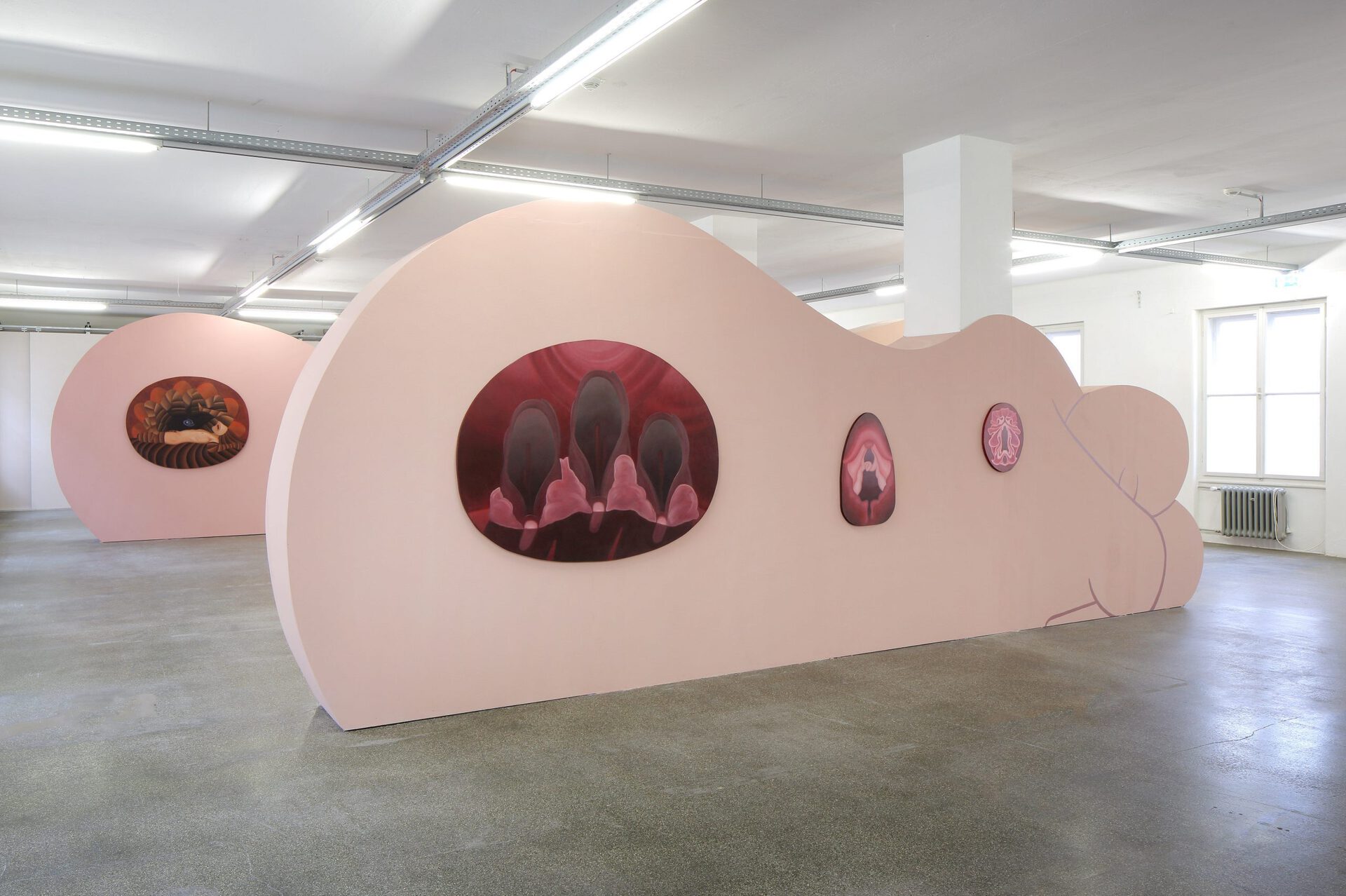
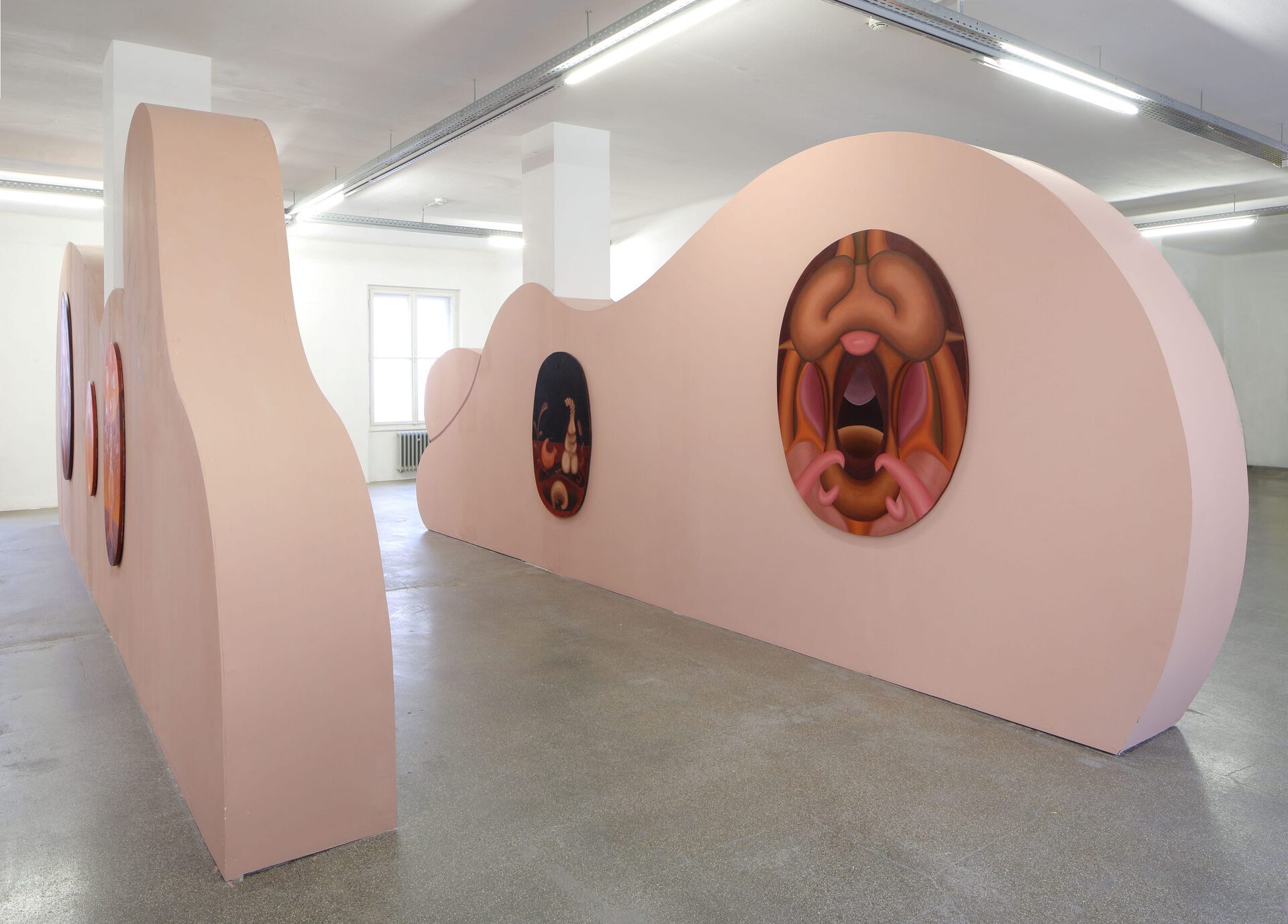
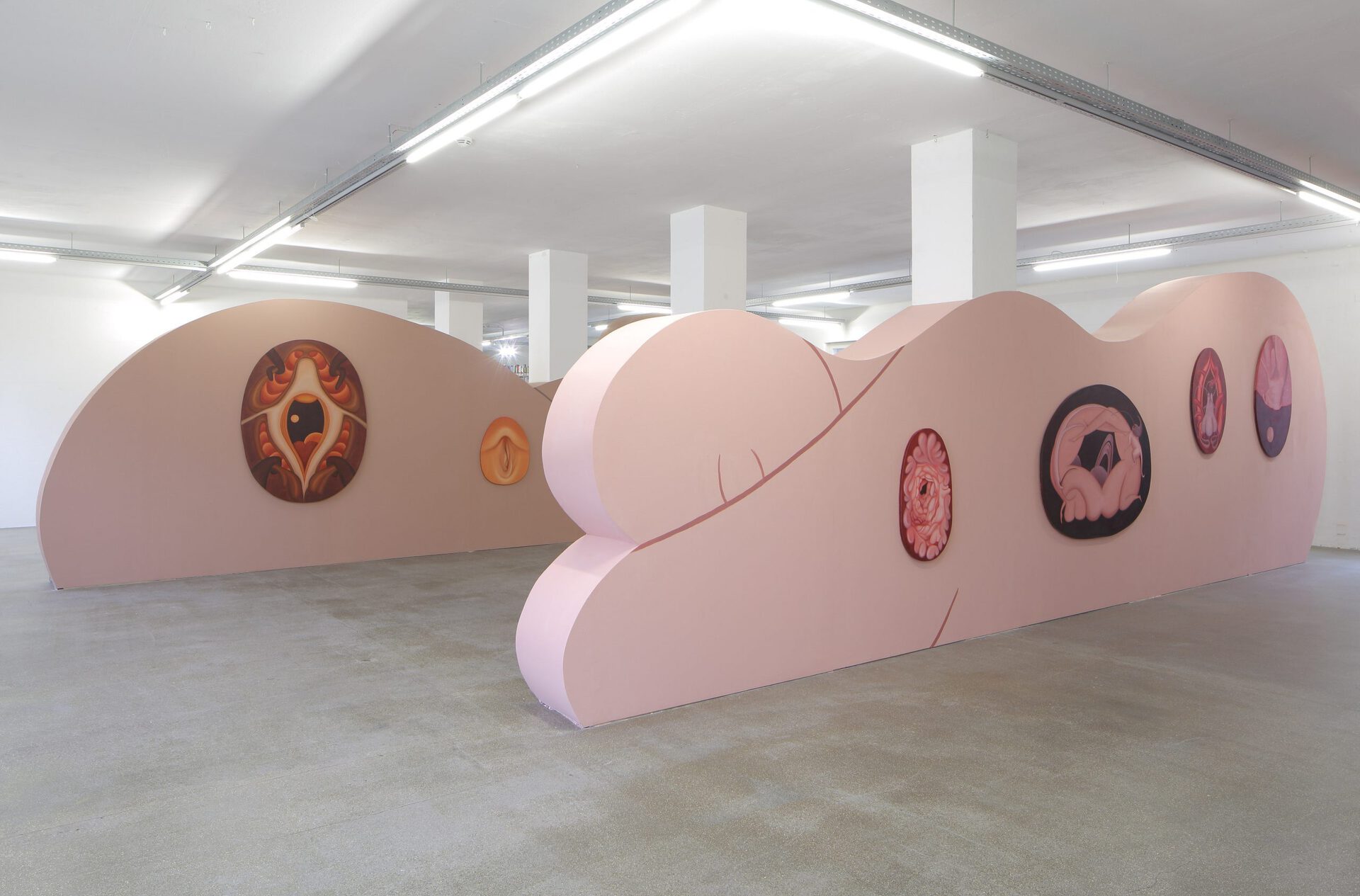
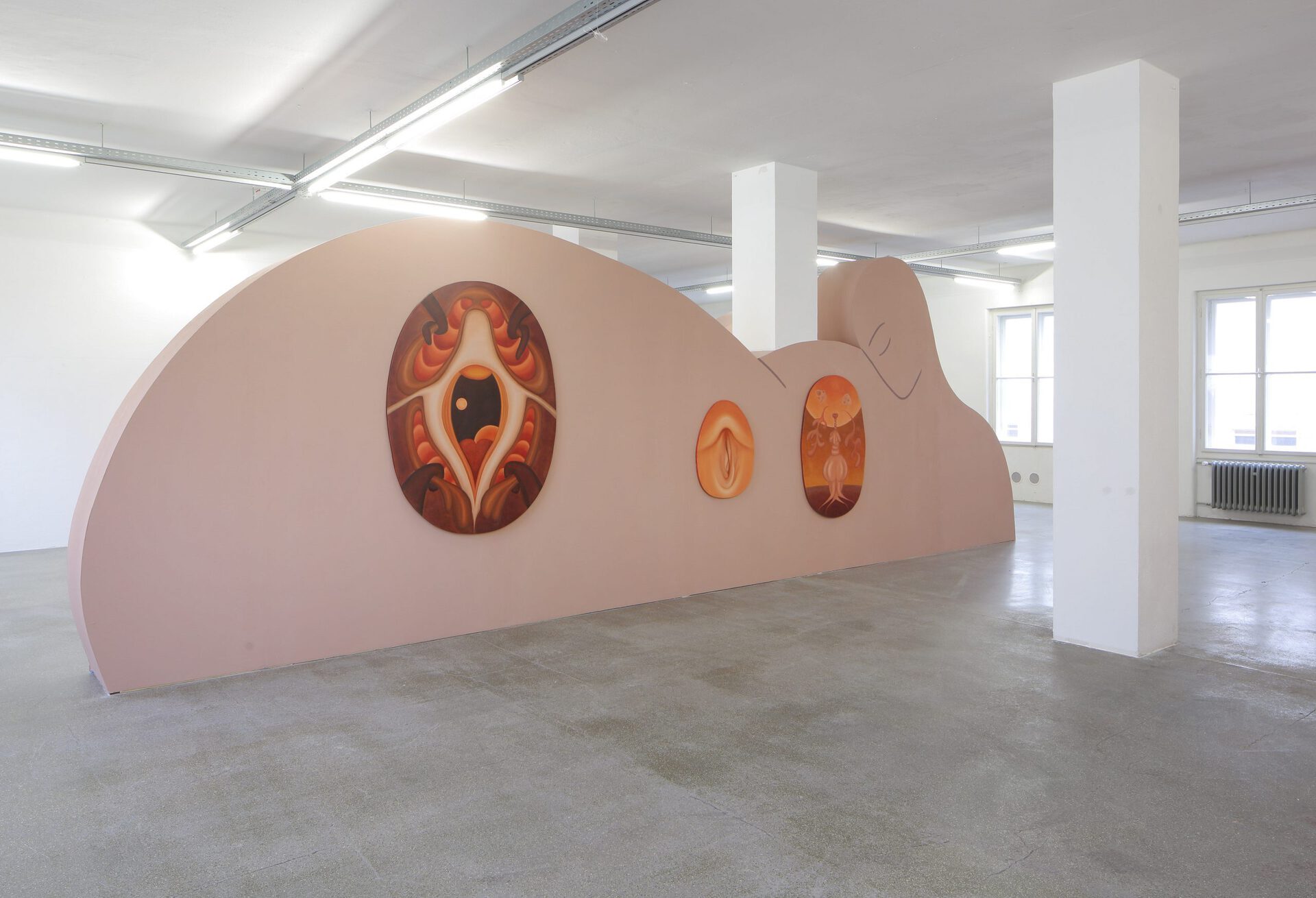
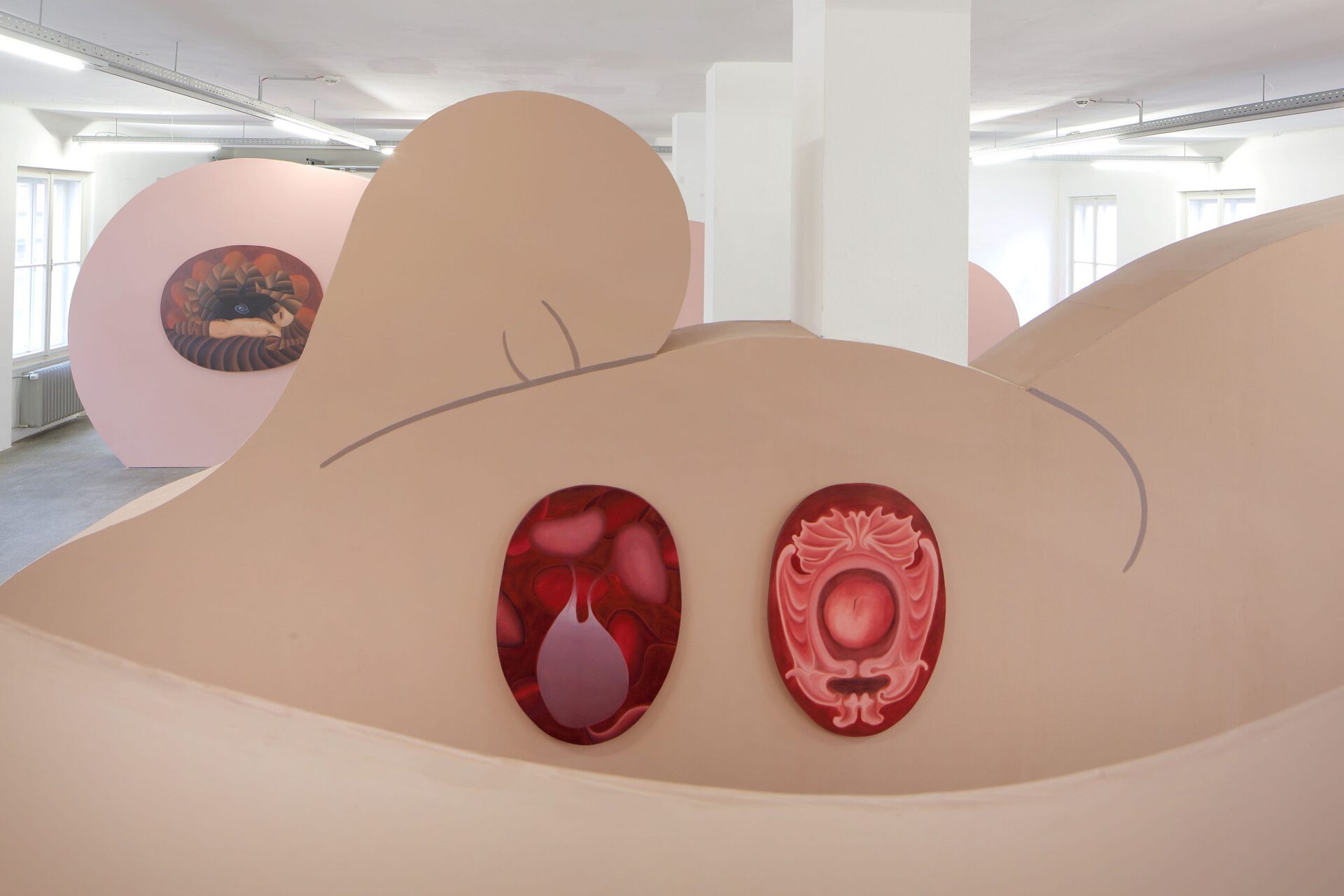

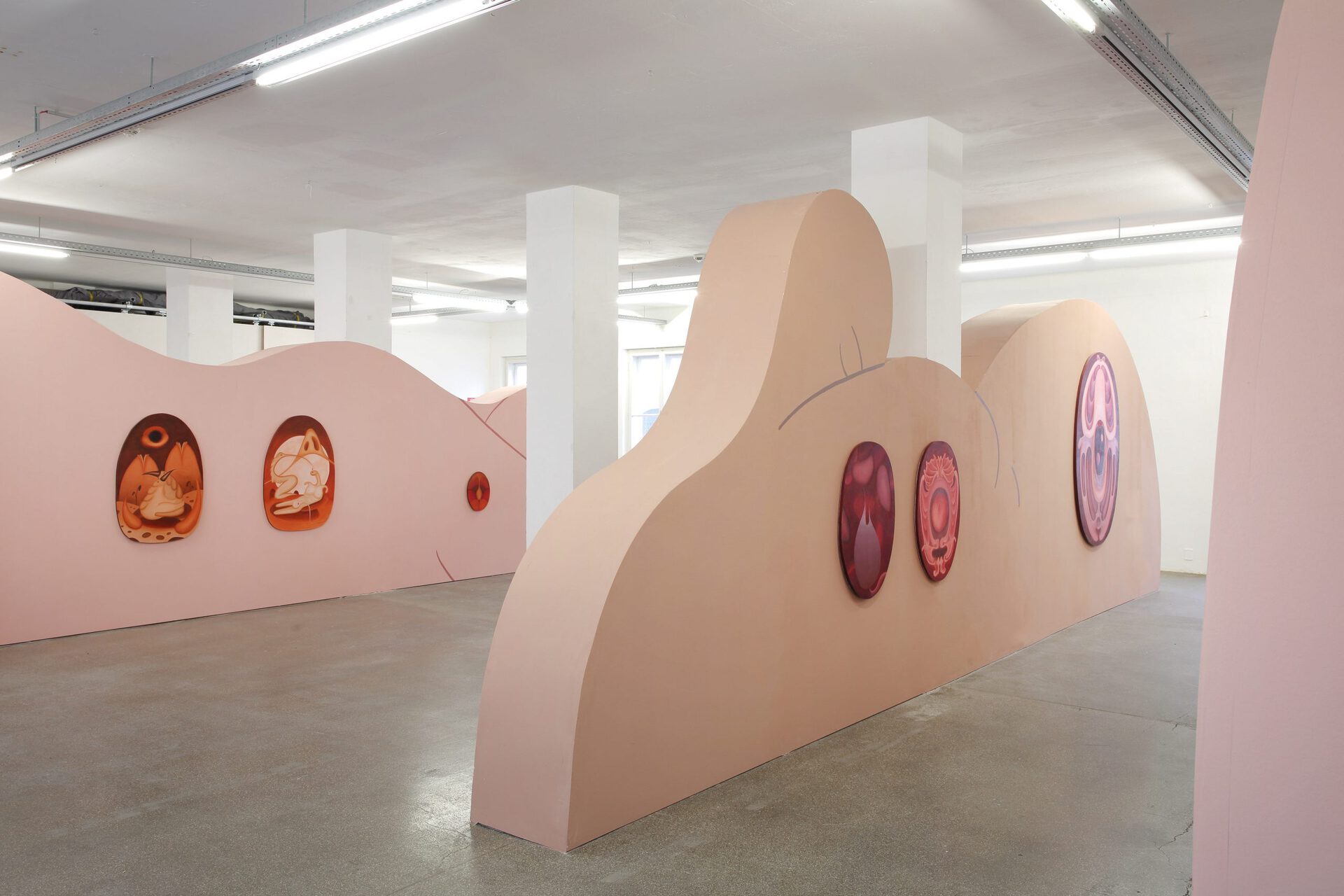
Location
FünfzigzwanzigDate
12.11 –15.01.2021Curator
Karolina RadenkovicPhotography
Rainer IglarSubheadline
In Marianne Vlaschits current installation “A Body That Lasts” (November 6, 2020 - January 16, 2021) at Fünfzigzwanzig, we encounter an exhibition setting consisting of three lush body constructions that become carriers of individual works (oil on canvas). The round shapes with their indicated limbs refer to bodies of human origin, but they are apparently beings from another time and dimension. Like spaceships that have laboriously landed on earth and are now in a state of hibernation, these beings tell stories about their existence based on the images on their bodies. They show us pictures of other planets with amorphous vegetation and several moons, of living beings entwined with each other, like future symbionts united into a collective form with their environment. These beings traveled through portals that are reminiscent of human orifices or the ovaries of plants.Text
6.11.2020 – 16.01.2021
Marianne Vlaschits
A Body That Lasts
In Marianne Vlaschits current installation “A Body That Lasts” (November 6, 2020 - January 16, 2021) at Fünfzigzwanzig, we encounter an exhibition setting consisting of three lush body constructions that become carriers of individual works (oil on canvas). The round shapes with their indicated limbs refer to bodies of human origin, but they are apparently beings from another time and dimension. Like spaceships that have laboriously landed on earth and are now in a state of hibernation, these beings tell stories about their existence based on the images on their bodies. They show us pictures of other planets with amorphous vegetation and several moons, of living beings entwined with each other, like future symbionts united into a collective form with their environment. These beings traveled through portals that are reminiscent of human orifices or the ovaries of plants.
"Maybe, and only maybe, and only through great commitment and intensive collaborative work (...) with other Earthlings, the flourishing of rich, cross-species structures (...) is still possible. I call all of this the Chtulucene - past, present, coming,“ says Donna Haraway, describing the dawning age, which should be a possible way out in the near future. Only in the sympoiesis - in the interaction of several life forms - the new cooperative system is conceivable in the age of the Chtulucene. A system not aiming at the particular advantage of a species, but rather on survival across species in general.
“The apocalypse is approaching!” - one of the ongoing key messages that terrifies us every day and refers more to the current situation than to anything in future. We find ourselves in an endless loop of ends, an everlasting apocalyptic speech (Derrida), although the term originally means revelation (Greek ἀποκάλυψις “revelation”) and does not initially refer to an end of something.
It could be that the sleeping beings sprang from the oracle of the Neolithic hypogeum (Hypogeum of Hal Saflieni, Malta 3600-2500 BC), in which tiny figures of luscious sleeping women were found. The underground, three-story cave labyrinth on Malta consists of 23 small temples, with the oracle chamber and the lowest temple forming the center. The walls and ceilings are decorated with ocher-colored paintings depicting winding tendril patterns, discs, hexagons and spirals. It is still unclear what exactly this place was used for, but it is believed that the sleeping beings are represented in a kind of spiritual transformation phase.
Let's wake them beings, or will their visions come to an end if we will?
One would like to believe that Marianne Vlaschits sleepers tell of a future that lies ahead. However, the state of rest of these beings not only indicates a phase of recovery from a journey that has already been made, but also the next departure into unknown worlds. They are in an intermediate stage between what has already been there and what has not been told yet. In their state of constant indolence, they report on the world of imagination and the utopia of a present. Both at the very same time.
Text: Karolina Radenkovic
Karolina Radenkovic